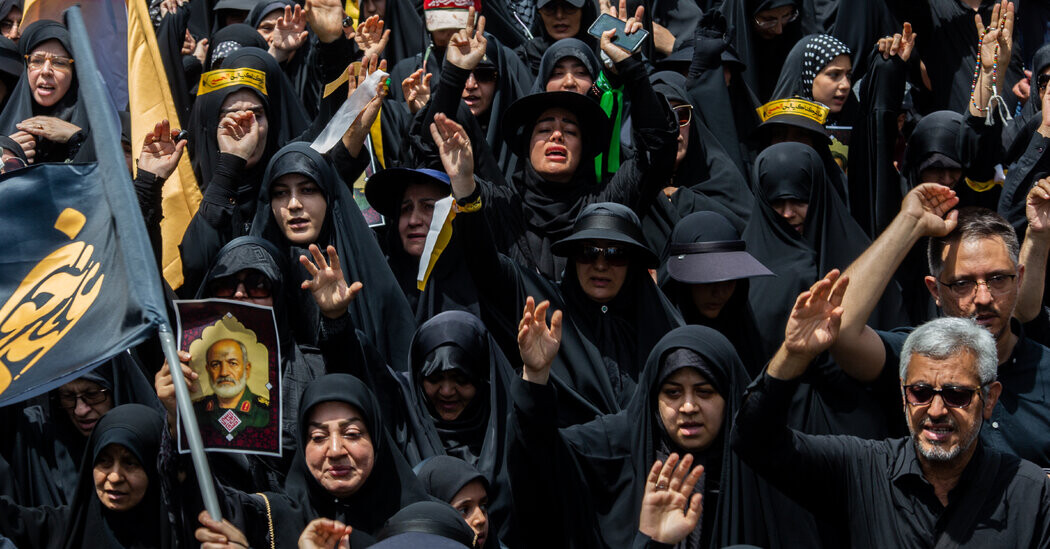

The theocratic government is repurposing folklore and patriotic anthems as it seeks to channel national outrage into increasing its support at home.
The event had all the typical trappings of Ashura, Iran’s ritualistic Shiite Muslim mourning period. The kneeling crowds were dressed in black. They beat their chests in unison. Then, Iran’s supreme leader, Ayatollah Ali Khamenei, beckoned the man leading the chants, and whispered in his ear.
Grinning, the singer broke into a tune that would have been wildly out of place at a religious ceremony for the Islamic Republic just a few weeks ago: “Ey Iran, Iran,” a patriotic anthem.
“In my soul and spirit, you remain, O homeland,” he sang, as the crowd recited the words back to him. “Wasted be the heart that does not tremble for you.”
Iran has emerged from its war with Israel — briefly joined by the United States — deeply wounded. Its military defenses are battered, its nuclear program was pummeled and its population has been devastated by a heavy civilian toll over the 12-day war.
Amid that bleak outlook, the country’s leaders see an opportunity. Outrage over the attacks has sparked an outpouring of nationalist sentiment, and they hope to channel that into a patriotic moment to shore up a government facing daunting economic and political challenges.
The result has been an embrace of ancient folklore and patriotic symbols that many of Iran’s secular nationalists once saw as their domain, not that of a conservative theocracy that often shunned Iran’s pre-Islamic revolutionary heritage.